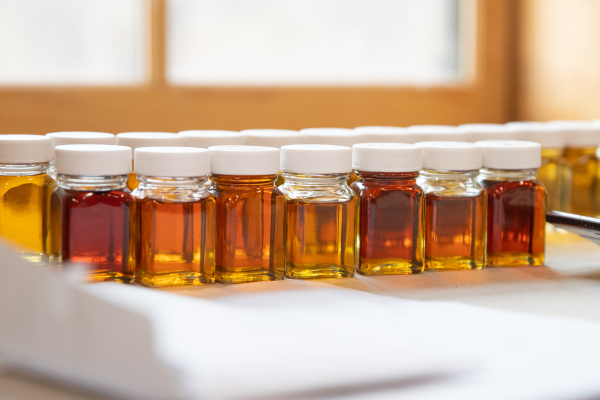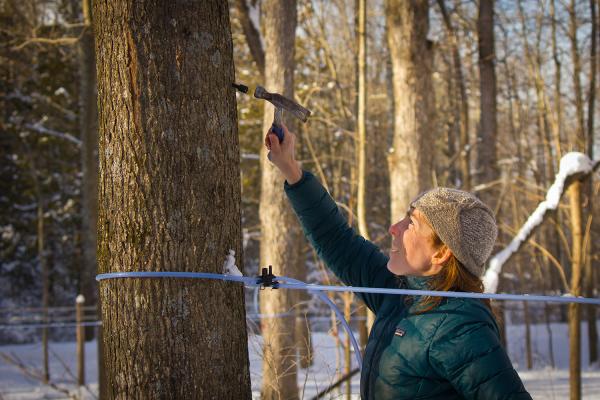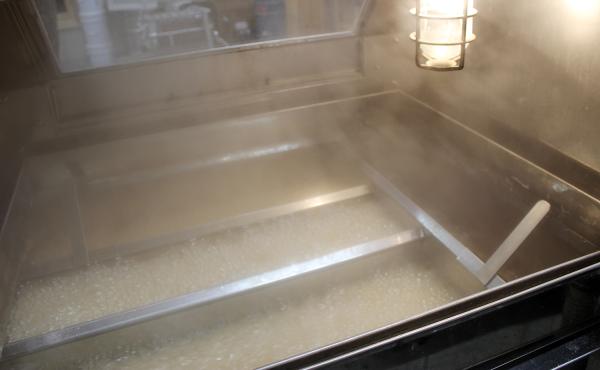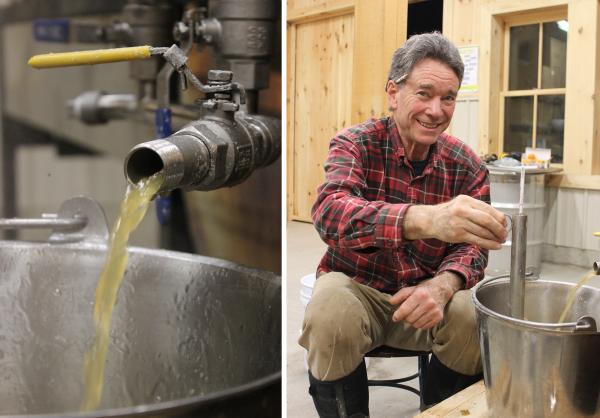NOTE: This blog is based on a 2020 interview with Marshall Webb. Marshall passed away unexpectedly last August, but he is always in our thoughts, especially during sugaring season, which he loved.
Most of you probably know that maple syrup comes in different colors, or grades.You may also know that the syrup color changes as the sugaring season progresses: Lighter syrup is usually made when the sap first begins to flow; darker syrup shows up later.
Darker syrup has a stronger flavor than the lighter syrup, but the quality and sugar content is the same. (This is why, in 2014, Vermont changed the grading names. The USDA adopted them a year later). It’s just a matter of taste preference.
But why does early sap make lighter syrup than late-season sap?
We asked Marshall Webb, who’s been sugaring at Shelburne Farms for many years.
“The color of the syrup is determined by two factors: tree physiology and microbes,” he said.
Tree physiology:
As a tree prepares to produce leaves, it converts starch stored in its trunks and roots to sugar, then draws moisture from the ground to help carry those sugars to its branches. As the season warms and its leaf buds swell, the chemistry of the sap changes. By late March or early April in the Champlain Valley, the sap actually gets "smelly and gooey," according to Marshall.
But it turns out, microbes are really where it’s at.
Microbes:
Fresh sugar maple sap is about 2% sucrose; the rest is water. On its way to the sugarhouse, sap picks up microbes that break some of that sucrose down into two simpler sugars: fructose and glucose. (This also happens if the sap sits around in the tank for a while.)
As temperatures warm up over the course of the sugaring season, more microbes tend to show up in the sap, producing more of these simple sugars.
Here’s where it gets interesting. While the sap is being cooked in the evaporator (killing all those microbes!), “nonenzymatic browning reactions” occur that affect syrup color and flavor. It turns out that fructose and glucose get involved in these reactions more than the sucrose, which is more stable.
So more microbes = more simple sugars = darker, more flavorful syrup late in the season!
There’s a great article in Northern Woodlands magazine about all this if you want to know more (it’s where I got most of this information).
But mysteries remain. Case in point: Last year, we made primarily dark syrup, along with some amber. This year, we’ve been sugaring for more than a week and have made over 300 gallons of golden syrup!
When asked about it, Marshall just shrugs and smiles.
So there’s a lot of mystery still to unravel in this deceptively simple business of boiling sap into syrup.
- Here's the list of maple syrup production by state.
- Find out how important maple sugaring is to Vermont's economy.




